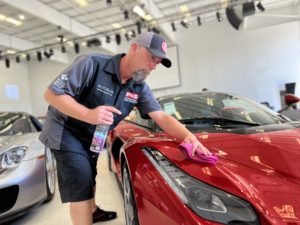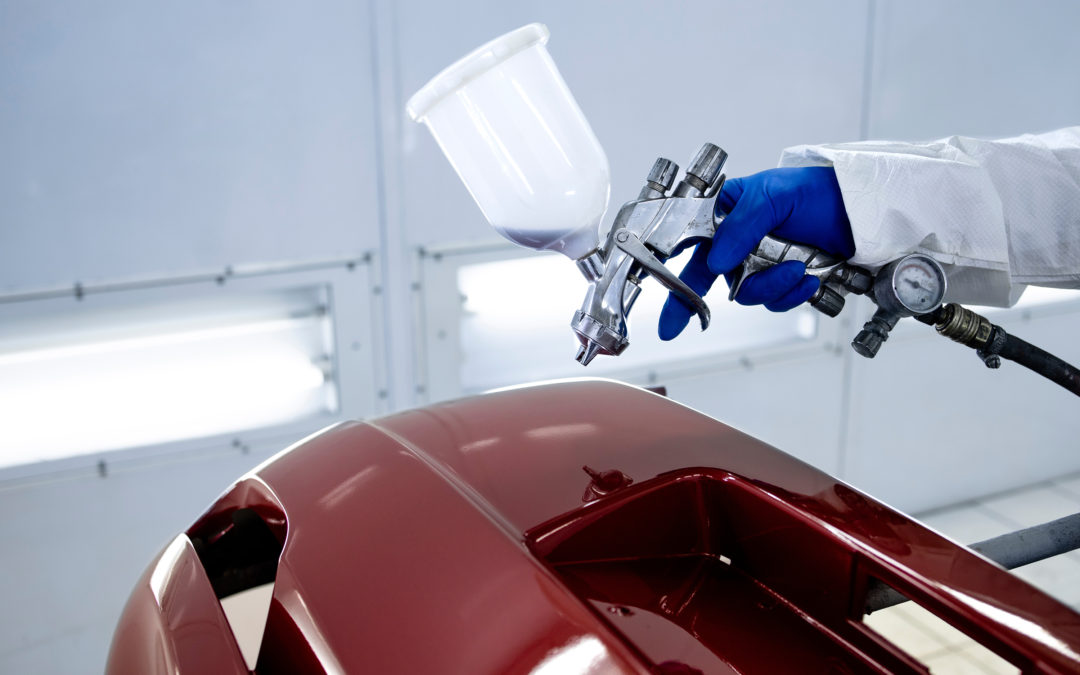By Josh Pierce, CD-SV, MC, WC, RIT, Carousel Auto Appearance, Iowa City, Iowa, United States
In recent years, automotive paint systems have undergone significant changes to meet environmental regulations and improve overall efficiency. As a result, modern car paints are thinner than ever before. While this advancement offers benefits such as reduced weight and improved fuel efficiency, it also raises concerns regarding the durability and protection of the paintwork. This is where ceramic coatings come into play. In this blog post, we will explore the importance of ceramic coatings in safeguarding today’s thin automotive paint systems.
Understanding Thin Automotive Paint Systems
To comply with environmental standards and increase manufacturing efficiency, automakers have transitioned to using thinner paint systems. These new systems often consist of a base coat, color coat, and clear coat. While these paints provide an aesthetically pleasing finish, they lack the thickness and durability of older, traditional paint systems.
Challenges of Thin Paint Systems
- Vulnerability to Scratches and Swirl Marks: Thin paint systems are more susceptible to scratches caused by everyday wear and tear, such as washing, parking lot mishaps, or debris on the road. Additionally, improper washing techniques or the use of abrasive materials can introduce swirl marks and micro-scratches that mar the paint’s appearance.
- Limited Protection Against UV Rays: UV radiation from the sun can fade and oxidize automotive paint over time. With thinner paint systems, the protective clear coat may not offer sufficient defense against these harmful rays, leading to premature paint deterioration and color fading.
- Chemical and Environmental Damage: Modern paints can be adversely affected by chemicals, bird droppings, tree sap, insect residues, and other environmental contaminants. The reduced thickness of the paint layers increases the risk of permanent damage if these substances are not promptly removed.
The Role of Ceramic Coatings
Ceramic coatings have emerged as a groundbreaking solution for protecting today’s thin automotive paint systems. These coatings, also known as nano-ceramic coatings, are composed of tiny particles of ceramic nanotechnology that bond to the paint surface at a molecular level. Here’s why they are so crucial:
- Enhanced Scratch Resistance: Ceramic coatings create an additional layer of protection, significantly reducing the risk of scratches and swirl marks. The hardness and resilience of ceramic coatings make them highly effective in safeguarding the underlying paint against minor abrasions from daily use.
- Superior UV Protection: Ceramic coatings provide a high level of resistance against UV rays, preventing color fading and oxidation. The UV-blocking properties help preserve the paint’s vibrancy and extend its lifespan, maintaining that showroom shine for years to come.
- Chemical and Contaminant Resistance: Ceramic coatings act as a barrier against environmental pollutants, preventing them from bonding to the paint surface. This makes it easier to clean off dirt, bird droppings, insect residues, and other contaminants that could cause long-term damage if left unattended.
- Hydrophobic Properties: A unique characteristic of ceramic coatings is that they are hydrophobic, which means that they repel water and prevent it from pooling or causing water spots on the surface. This property simplifies the maintenance process, as water and dirt slide off more easily, resulting in a cleaner and glossier appearance.
In today’s automotive industry, where thin paint systems have become the norm, protecting the paintwork of your vehicle is more important than ever. Ceramic coatings provide an indispensable solution to counter the challenges posed by thinner paints. By applying a ceramic coating, you can enhance scratch resistance, shield against UV damage, repel contaminants, and enjoy the long-lasting beauty of your vehicle’s finish.
It is essential to note that while ceramic coatings offer significant advantages, they are not a substitute for regular care and maintenance.

About the Author: Josh Pierce, CD-SV, MC, WC, RIT, is a member of the International Detailing Association with the distinctions of Certified Detailer, Skills Validated, and Recognized Independent Trainer. He has spent two decades in the auto detail industry and operates Carousel Auto Appearance, one of the Midwest’s largest and most successful automotive appearance centers.


